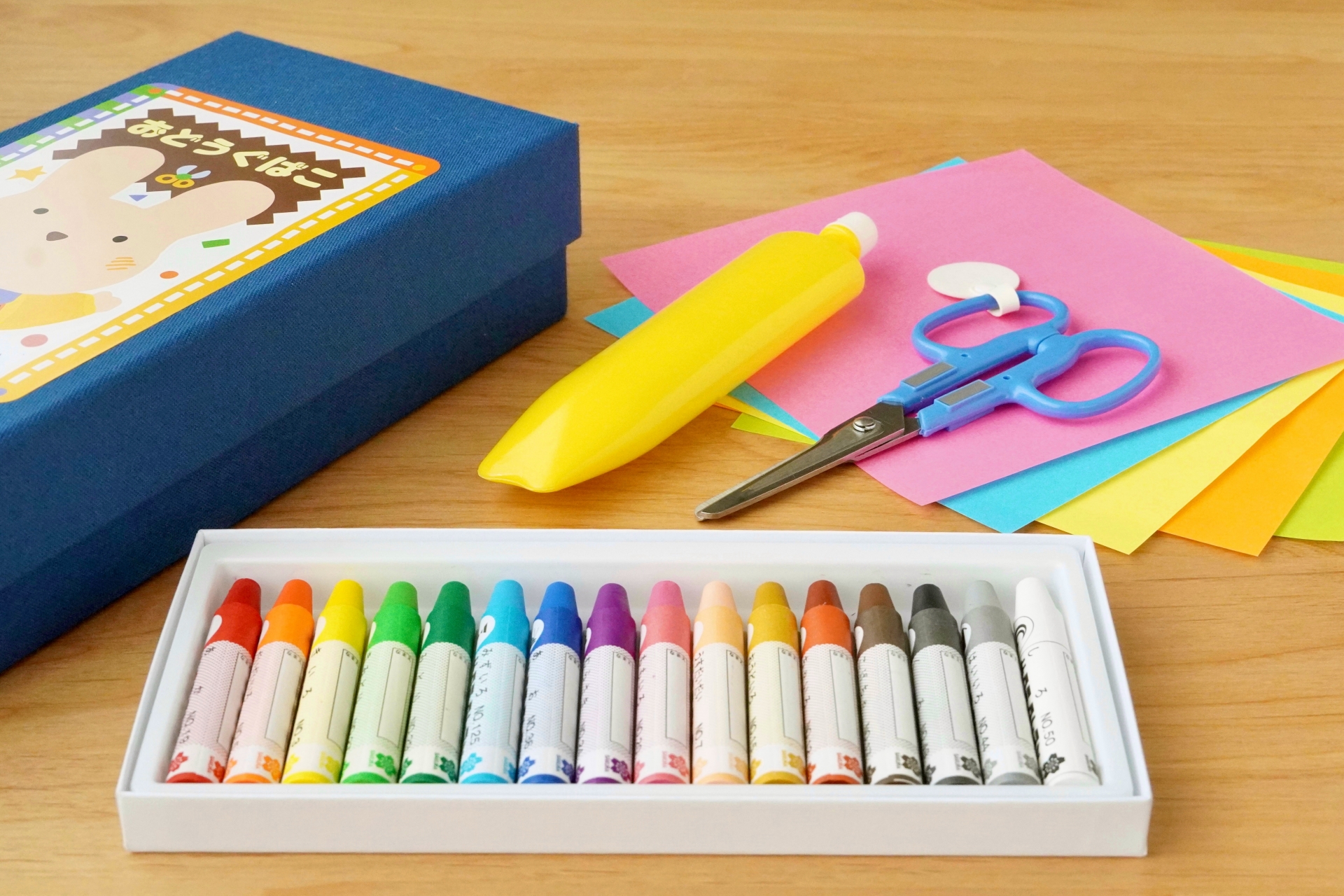How Japanese Stationery Is Winning Over The World
The traditional Japanese stationery market is evolving. With digital transformation underway in workplaces and schools, Japan’s stationery brands are finding new ways torevamp products and reach online audiences.
- For years, some of the world’s best stationery brands have originated in Japan.
- With a reputation for quality, functionality and unique design, Japanese stationery products are finding a growing audience overseas.
- With challenges in the domestic market, tourism and e-commerce are more important than ever to encourage international demand and an expanded customer base.
With a reputation for quality and products to suit every need, Japanese stationery brands are winning fans around the world. According to the Japan Writing Instruments Manufacturers Association (JWIMA), the export value of writing instruments in 2023 was around 120 billion yen, up nearly 15% from 2018.
The uptick in exports comes from a rise in e-commerce as well as increased cross-border supply trade. What’s the secret behind the global appeal of Japan’s best stationery brands?
The uptick in exports comes from a rise in e-commerce as well as increased cross-border supply trade. What’s the secret behind the global appeal of Japan’s best stationery brands?
Japanese stationery: a mark of quality
Several cultural factors have played a role in shaping the typically high quality of Japanese stationery. The Japanese writing system consists of three different character sets (kanji, hiragana, and katakana) as well as the Roman alphabet. There’s always been a demand for writing instruments that don’t bleed, dry quickly, and write extremely smoothly.
Japanese consumers are more likely to develop preferences and personal attachments to stationery from a young age. Japan’s stationery stores have played a key role in the shopping habits of the population. Unlike Europe and the US, where schools provide or loan classroom supplies, Japanese students are responsible for bringing their own supplies from Grade 1 – with each individual pencil, crayon, and eraser marked with their name.
This, combined with an abundance of character-branded merchandise and the embrace of ‘kawaii’ (cuteness) culture, makes attractive product design a primary purchase factor. With more and more young people preferring to shop on the internet than in-store, today’s consumers are also searching for reliable outlets to buy Japanese stationery online.
Japanese consumers are more likely to develop preferences and personal attachments to stationery from a young age. Japan’s stationery stores have played a key role in the shopping habits of the population. Unlike Europe and the US, where schools provide or loan classroom supplies, Japanese students are responsible for bringing their own supplies from Grade 1 – with each individual pencil, crayon, and eraser marked with their name.
This, combined with an abundance of character-branded merchandise and the embrace of ‘kawaii’ (cuteness) culture, makes attractive product design a primary purchase factor. With more and more young people preferring to shop on the internet than in-store, today’s consumers are also searching for reliable outlets to buy Japanese stationery online.

The traditional stationery industry is evolving
Today, Japanese stationery products are appreciated by consumers around the world. Quick-drying gel ink pens, first launched in Japan in the 1980s, have been embraced in the West, where a higher percentage of left-handed people struggle with smudges when writing from left to right.
For example, EnerGel has sold over 1.4 billion gel ink pens worldwide as of July 2024. In recent decades, Japanese brands like Sakura, Pentel and Pilot have become household names.
Despite success stories, the global pandemic left a significant mark on the domestic landscape. As offices accelerate efforts to go paperless, and schools and universities encourage laptops, tablets and digital devices, there is concern that demand for traditional products like notebooks may suffer.
Between FY2019 and 2023, the Japanese stationery and office supplies market is estimated to have shrunk by over 10% on a manufacturer shipment value basis. As corporate demand continues to lag, stationery manufacturers have responded by ramping up their focus on more enticing products for personal use.
For example, EnerGel has sold over 1.4 billion gel ink pens worldwide as of July 2024. In recent decades, Japanese brands like Sakura, Pentel and Pilot have become household names.
Despite success stories, the global pandemic left a significant mark on the domestic landscape. As offices accelerate efforts to go paperless, and schools and universities encourage laptops, tablets and digital devices, there is concern that demand for traditional products like notebooks may suffer.
Between FY2019 and 2023, the Japanese stationery and office supplies market is estimated to have shrunk by over 10% on a manufacturer shipment value basis. As corporate demand continues to lag, stationery manufacturers have responded by ramping up their focus on more enticing products for personal use.
Products that deliver something different win fans at home and abroad
Since the early 2010s, Japanese stationery brands have launched updated product ranges that deliver a little something extra. Consumers have proven receptive to higher price points if they believe a product is worth it.
In a market where most mechanical pencils cost less than 1,000 yen, Kuru Toga Dive pencils, a premium model priced at 5,500 yen, have become so popular that its manufacturer has struggled to keep up with demand. Promising an ‘immersive writing experience,’ the pencil automatically advances the lead, freeing up the user from having to pause and click.
In a market where most mechanical pencils cost less than 1,000 yen, Kuru Toga Dive pencils, a premium model priced at 5,500 yen, have become so popular that its manufacturer has struggled to keep up with demand. Promising an ‘immersive writing experience,’ the pencil automatically advances the lead, freeing up the user from having to pause and click.

There’s also strong demand for stationery as tools for self-expression, particularly in the arts and crafts space. Ultra-fine felt-tip markers, initially introduced as office supplies, are being used for drawing and calligraphy in Europe.
Some Japanese manufacturers, including Uni-ball, have responded by offering a wider variety of products overseas. While the domestic lineup of the Uni-ball ‘Pin’ fineliner consists of three nib sizes in black, 10 different nib sizes plus brush-like tips are available for the international market.
Thanks to Japanese brands investing in websites that cater to different markets, online shopping malls and subscription box services, artists and stationery aficionados around the world now enjoy high-quality Japanese pens more easily. But how can brands capture the attention of consumers beyond this particular interest group?
Some Japanese manufacturers, including Uni-ball, have responded by offering a wider variety of products overseas. While the domestic lineup of the Uni-ball ‘Pin’ fineliner consists of three nib sizes in black, 10 different nib sizes plus brush-like tips are available for the international market.
Thanks to Japanese brands investing in websites that cater to different markets, online shopping malls and subscription box services, artists and stationery aficionados around the world now enjoy high-quality Japanese pens more easily. But how can brands capture the attention of consumers beyond this particular interest group?
Inbound visitors are the key to future growth
One of the ways global audiences discover Japanese products is through travel. In 2023, foreign tourists spent a record-breaking 5.3 trillion yen in Japan, a 10.2% increase from 2019. About 26.5% of this spending was on shopping, with over-the-counter drugs and healthcare products, sweets, Japanese whisky, and stationery among the most sought-after items.
Where can tourists go to buy Japanese stationery in-store? Hobby and lifestyle department store Hands (formerly Tokyu Hands) and stationery chain Itoya have become popular shopping destinations for travelers. They offer a variety of writing implements, paper crafts, and intricate 3D greeting cards that make for ideal souvenirs due to their affordability and size.
Many Japanese stationers have opened stores at major airports. Itoya has outlets at both Haneda and Narita airports. Kokuyo, a stationery manufacturer that’s been in business for almost 120 years, opened a specialty store directly connected to Haneda Airport Terminal 3 Station in Tokyo.
It also operates a global e-commerce site that ships to most countries and territories, accepts more than 100 international payment options and offers customer support in eight languages.
Maintaining an online sales channel is particularly important, as inbound visitors do more than boost domestic sales figures. They’re increasingly shopping online to stock up on repeat purchases of products picked up during their travels.
Where can tourists go to buy Japanese stationery in-store? Hobby and lifestyle department store Hands (formerly Tokyu Hands) and stationery chain Itoya have become popular shopping destinations for travelers. They offer a variety of writing implements, paper crafts, and intricate 3D greeting cards that make for ideal souvenirs due to their affordability and size.
Many Japanese stationers have opened stores at major airports. Itoya has outlets at both Haneda and Narita airports. Kokuyo, a stationery manufacturer that’s been in business for almost 120 years, opened a specialty store directly connected to Haneda Airport Terminal 3 Station in Tokyo.
It also operates a global e-commerce site that ships to most countries and territories, accepts more than 100 international payment options and offers customer support in eight languages.
Maintaining an online sales channel is particularly important, as inbound visitors do more than boost domestic sales figures. They’re increasingly shopping online to stock up on repeat purchases of products picked up during their travels.

The Japan External Trade Organization and the Ministry of Economy, Trade and Industry have reported a possible correlation between visiting Japan and seeking out Japanese products online after returning home.
A recent survey of tourists from the US and Taiwan has reported similar findings, noting that 88.8% of respondents bought additional souvenirs from Japan after returning to their home countries, either through e-commerce or local retailers. This is particularly relevant to products like food, clothing and stationery, where the quality is best understood through firsthand experience.
By offering opportunities for discovery during travel to Japan and engaging consumers via social media, multilingual websites and e-commerce channels, Japanese stationery brands can cultivate new fanbases around the world.
By offering opportunities for discovery during travel to Japan and engaging consumers via social media, multilingual websites and e-commerce channels, Japanese stationery brands can cultivate new fanbases around the world.
***


















 The Latest
The Latest